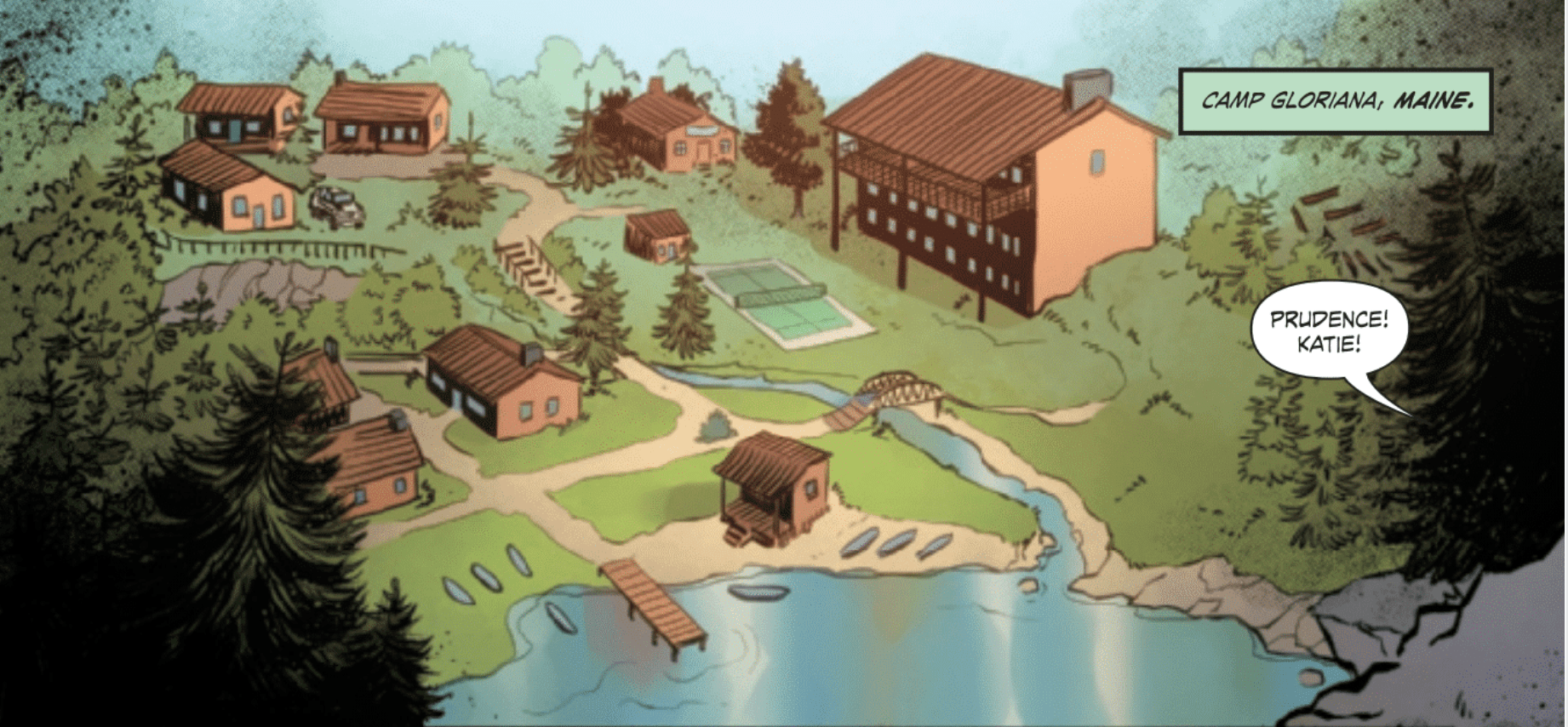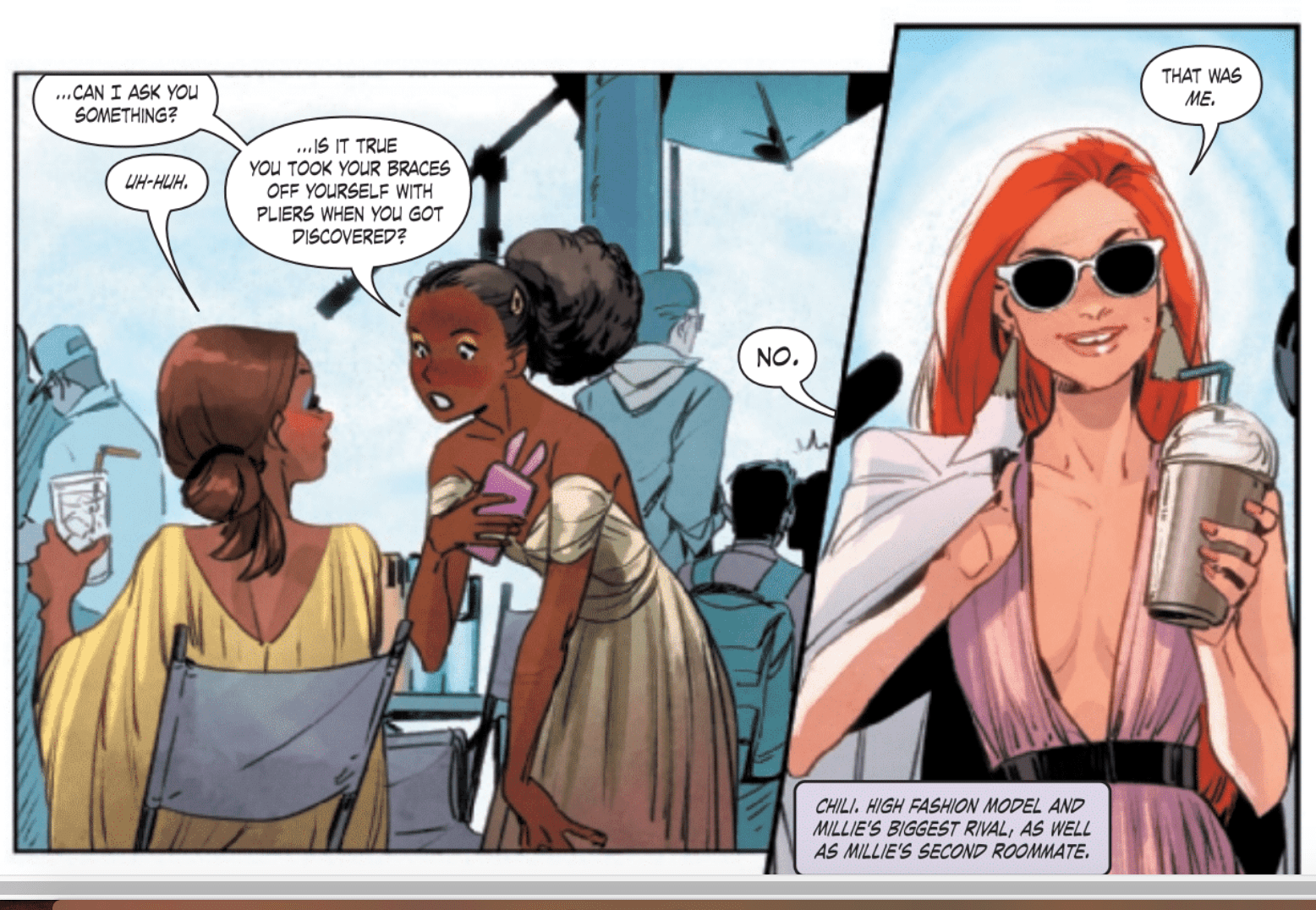Fearless #1 takes a promising idea but fails to deliver the goods because two of the stories are memorable for the wrong reasons.

Fearless #1
“Campfire Song”
MFR ON YOUTUBE (latest video)
Help us reach 5K Subs!
Writer: Seanan McGuire
Artist: Claire Roe
Color Artist: Rachelle Rosenberg
“Style High Club”
Writer: Leah Williams
Artist: Nina Vakueva
Color Artist: Rachelle Rosenburg
“Unusual Suspects”
Writer: Kelly Thompson
Artist: Carmen Carnero
Color Artist: Tamra Bonvillain
Lettering: Janice Chiang
In theory, Fearless #1 is exactly the kind of content that Marvel needs to be producing. It’s a comic that features women characters and it’s written exclusively by women. Plenty of readers might hear that and think, “Yes! Sign me up!” This writer is part of that group. This series is inherently exciting because, at least on some level, it demonstrates that Marvel knows diversity and representation need to be a priorities moving forward. But Fearless #1, as a comic book, fails to tell compelling stories and it doesn’t provide many reasons to hope for the rest of the miniseries.

Let’s focus on the most successful of the three mini-stories included in the issue, “Campfire Song.” This snippet is the only one of the trio that will receive another installment in the series; writer Seanan McGuire’s snippet was the only one that ended with “too be continued.” The beginning of McGuire’s plot isn’t perfect; Carol Danvers, who the writer calls the “heroine of heroines,” is a non-factor and she’s conversationally outshined by her unnamed French coworker. Danvers’ usually snappy dialogue is absent and she’s practically invisible in the portion of the story.

Speaking of invisible, Sue Storm kicks things off in a scene with her husband Reed Richards. The dialogue between the two effectively sets the stage for what’s to come; McGuire establishes that Storm distrusts the Gloriana Leadership Camp for Female Empowerment, where she and other heroes will be giving speeches to the technological geniuses of tomorrow. Storm thinks the camp is too secretive but Reed encourages his wife to ignore her instincts and attend the event anyway. Reed’s actions are fair because Storm could be overly paranoid. But, given that this is a Marvel Comics, it’s far more likely than shenanigans are on the horizon.

Of the trio of heroines involved in “Campfire Song,” Storm (relatively) fares the best. She fends off some loggers who insult her because she’s a mutant. Storm doesn’t show much restraint with these men; after they criticize her and one of them throws a rock at her, Storm unleashes a nasty storm of lightning and rocks on them. This aggressive approach seems to defy the lessons of Charles Xavier but Storm redeems herself with some moving lines after these actions.
“Men and their money,” Storm says. “They have the means for making more than they’ll ever need without violating pristine boreal forests like this one. Have they never heard the word ‘enough’ before? But perhaps none of us know what ‘enough’ means.” Storm’s words add some much-needed weight to what had been a mostly unmoving story. Hopefully, she, along with Storm and Danvers, will receive more chances to explore meaningful real-world issues as the miniseries continues.

The art team of Claire Roe and Rachelle Rosenberg deserves credit because they make each of the settings (a camp in Maine, an apartment in Manhattan, a station in Earth’s orbit in space and a forest in Canada) feel genuinely distinct from one another. At the camp site, you can practically smell the bug spray and campfire smoke. Roe fills the background with trees and Rosenberg’s usage of rich greens complement the feeling that the camp is deep in the woods. You can also practically hear the sounds of traffic when the story shifts to the Richards’ home in Manhattan; the buildings look particularly industrialized and the effect is augmented by the jarring juxtaposition of the city and the campsite. Finally, the astronomical purples used by Rosenberg help transition the story’s setting from the city to outer space and the dreary gray skies help contrast the Canadian forest from the one seen at the campsite. Roe and Rosenburg help make each part of the story feel fresh but the consistent art styles remind readers that each piece is connected.
Quick Hits
“Style High Club,” the second portion of the issue, could have been really enjoyable. Writer Leah Williams had the opportunity to dig deep and satirize society’s superficial value of appearance. Instead, the story features the worst of Instagram culture, where most people are obsessed with selfies. Most of the story reads like an episode of a CW show about teenagers. Chili is a stereotypical mean girl (armed with loud sunglasses and a coffee drink from the equivalent of Starbucks) and a chunk of the snippet focuses on her rivalry with Millie, the main character. Like the issue itself, “Style High Club” takes a fascinating idea and doesn’t make the most of it.

The third mini-story, “Unusual Suspects,” will disappoint the reader because it sets up an intriguing mystery and abruptly ends. Elsa Bloodstone calls Jessica Jones and asks her for help without providing many details. Writer Kelly Thompson and the art team of Carmen Carnero and Tamra Bonvillain establish this mysterious tone because Thompson doesn’t give a lot of explanation and the artists draw Bloodstone in close-up panels so the reader can’t see her surroundings. Jones comes to Bloodstone’s rescue and finds her surrounded by miniature versions of Marvel’s leading heroines, including Captain Marvel, Gwenpool, Ms. Marvel, X-23 and others.

But there’s no resolution; Bloodstone simply says, “I don’t want to bloody talk about it, Jones!” Then, the story simply ends. What happened to the heroes? The world may never know. Maybe Thompson is just playing with the fans but, as a reader, that’s a frustrating tease, especially when it closes out the issue.
Given the talent that’s involved, fans should trust that the miniseries will get better. But, based on this opening installment, it’s off to a lackluster start.
What do you think of Fearless #1? Where do you hope to see it go from here?

